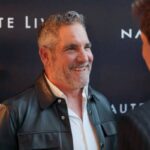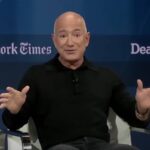We adhere to strict standards of editorial integrity to help you make decisions with confidence. Some or all links contained within this article are paid links.
Celebrity chef Gordon Ramsay is a culinary titan and a household name in the restaurant industry. With a global empire of 88 restaurants, earning a total of eight Michelin stars, Ramsay has cemented his legacy as one of the most successful chefs in the world. And his estimated net worth of $220 million also places him among the highest-earning figures in the business.
However, during an appearance on the First We Feast YouTube channel, Ramsay revealed a surprising insight about his industry: one group always holds the upper hand — landlords.
Host Sean Evans, curious about the inner workings of Ramsay’s restaurant empire, asked, “Is there a hidden cost in running a restaurant that most diners are unaware of?”
Without hesitation, Ramsay replied, “Yeah, it’s called rent and labor cost — two big key factors in running a successful business.”
He went on to elaborate on landlords’ unique position in the industry: “Landlords — they win either way. So the more successful you are, the more rent they ask for. The less successful you are, the more demanding they are after the rent.”
Do landlords ‘win either way’?
Ramsay’s blunt assessment highlights a critical dynamic in the restaurant business: the leverage landlords hold in commercial real estate. While restaurateurs may find themselves grappling with thin profit margins, rising labor costs, and fluctuating food prices, landlords maintain a consistent advantage — the rent is always due.
When restaurants thrive, they’re often eager to stay in their prime locations, giving landlords the upper hand to renegotiate higher rents. In some cases, landlords may include percentage rent agreements, where tenants pay a base rent plus a percentage of gross sales exceeding a certain threshold. Under this arrangement, landlords directly benefit from a tenant’s success, as higher sales lead to higher rent payments.
When a restaurant struggles and fails to pay its rent, the landlord’s income stream is also at risk. To mitigate losses, landlords often turn to legal remedies to recover unpaid rent. This may include seizing the tenant’s assets on the premises — a process known as distraint — or initiating court proceedings to claim the owed amounts. In cases of prolonged non-payment or other lease violations, landlords may want to terminate the lease to seek a more financially stable tenant.
Getting a piece of the action
If you’re interested in restaurant real estate, consider exploring names like Four Corners Property Trust (FCPT), a real estate investment trust (REIT) that specializes in owning and acquiring net-leased restaurant and retail properties.
But for those seeking more stability, there’s another food-related real estate segment that demands attention — necessity-based properties.
Think about your go-to supermarket — the one you visit every week. How long has it been in the same spot? Likely for years, if not decades. That consistency highlights the appeal of this sector.
Properties anchored by grocery stores often attract long-term tenants, creating more predictable and reliable cash flow for investors.
Once reserved for institutional and elite investors, this sector has become increasingly accessible to a broader audience. For instance, platforms like First National Realty Partners (FNRP) allow accredited investors with a mininum of $50,000 investment to own shares in grocery-anchored properties without the hassle of finding and managing deals themselves.
FNRP properties are leased to national brands like Whole Foods, CVS, Kroger, and Walmart, which provide essential goods to their communities. Thanks to Triple Net (NNN) leases, investors enjoy stable cash flow without bearing the burden of tenant-related costs.
Beyond grocery stores, residential properties also provide peace of mind for investors seeking reliability. Just as people always need groceries regardless of the economy, they also need a place to live. That makes housing one of the most dependable and enduring sectors in real estate.
And you don’t need to buy a house to get started. Crowdfunding platforms like Arrived have simplified the process, enabling everyday investors to own shares in rental properties without the large down payments or management headaches typically associated with owning real estate.
With Arrived, you can invest in shares of rental homes with as little as $100 without worrying about mowing lawns, fixing leaky faucets, or handling difficult tenants. The process is simple: browse a curated selection of homes that have been vetted for their appreciation and income potential. Once you find a property you like, select the number of shares you’d like to purchase, and then sit back as you start receiving rental income deposits from your investment.
This article provides information only and should not be construed as advice. It is provided without warranty of any kind.








